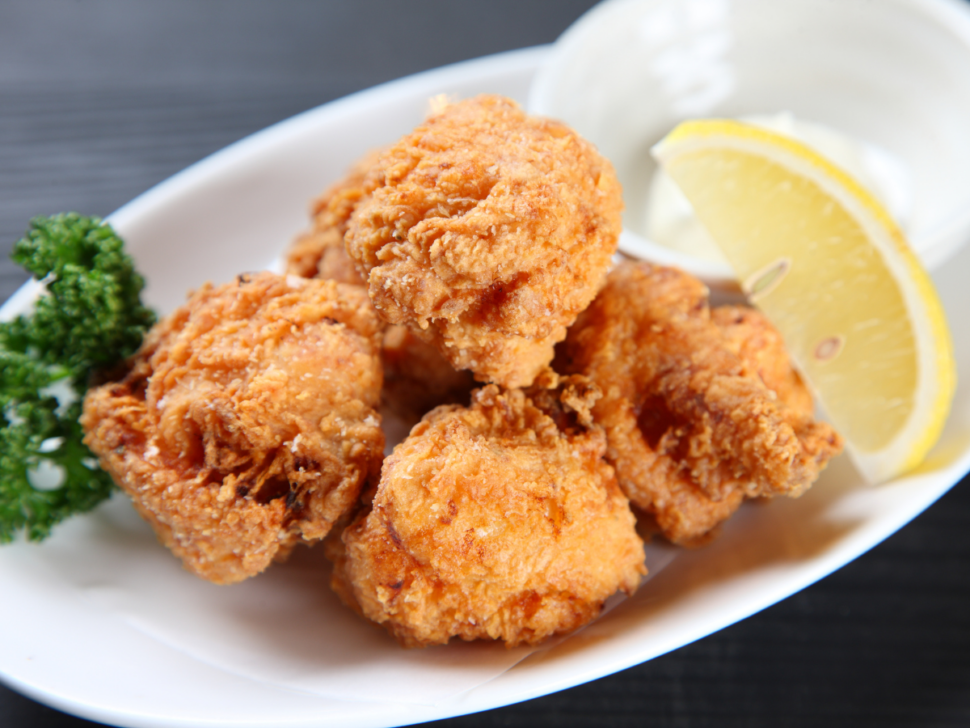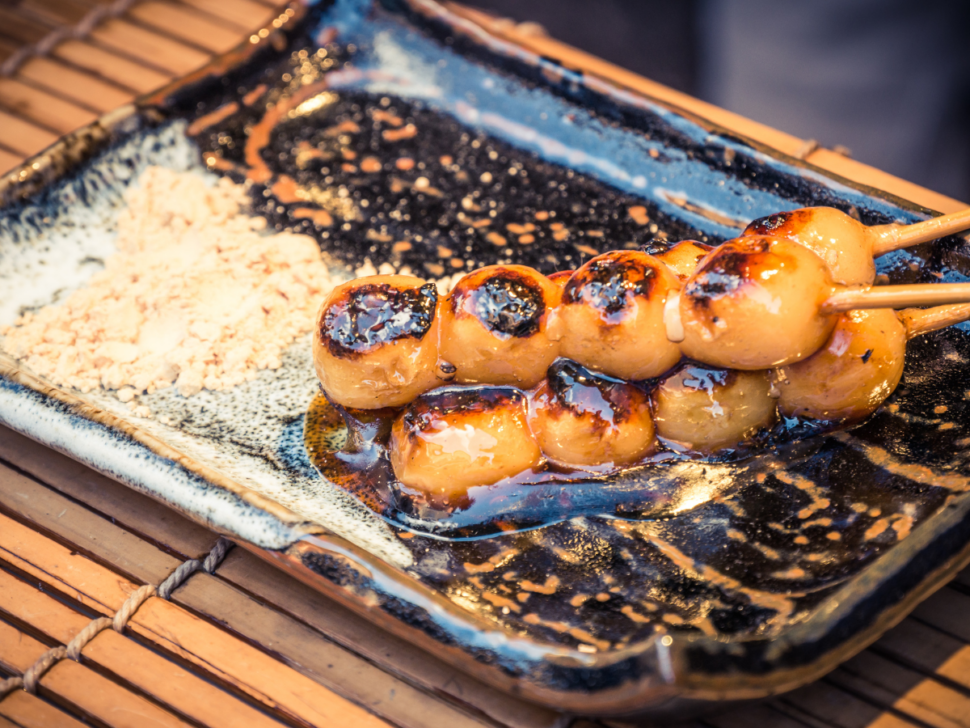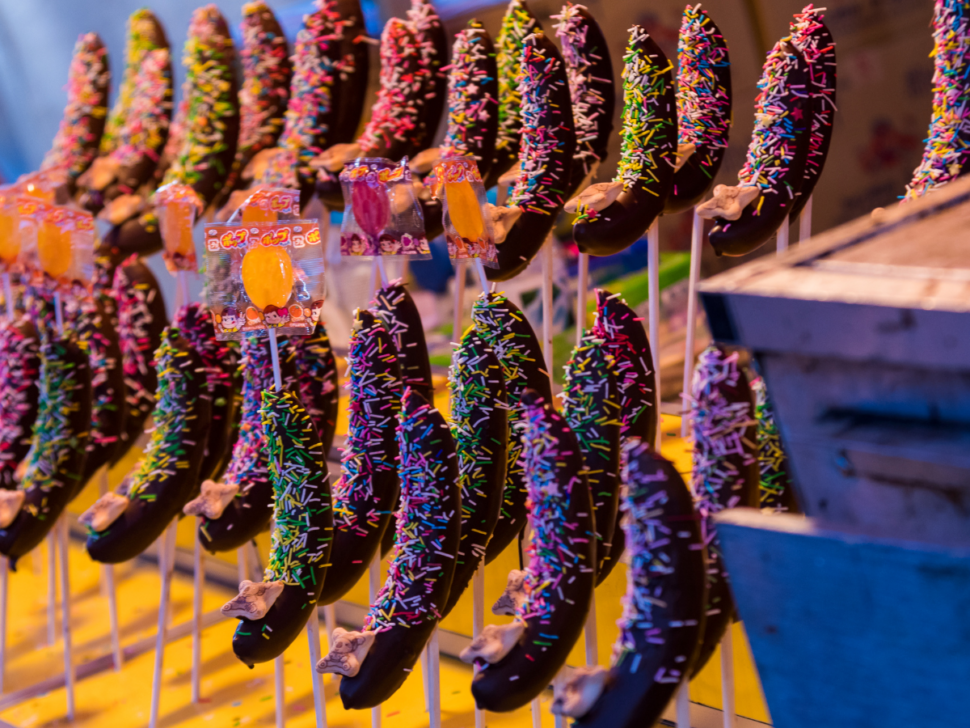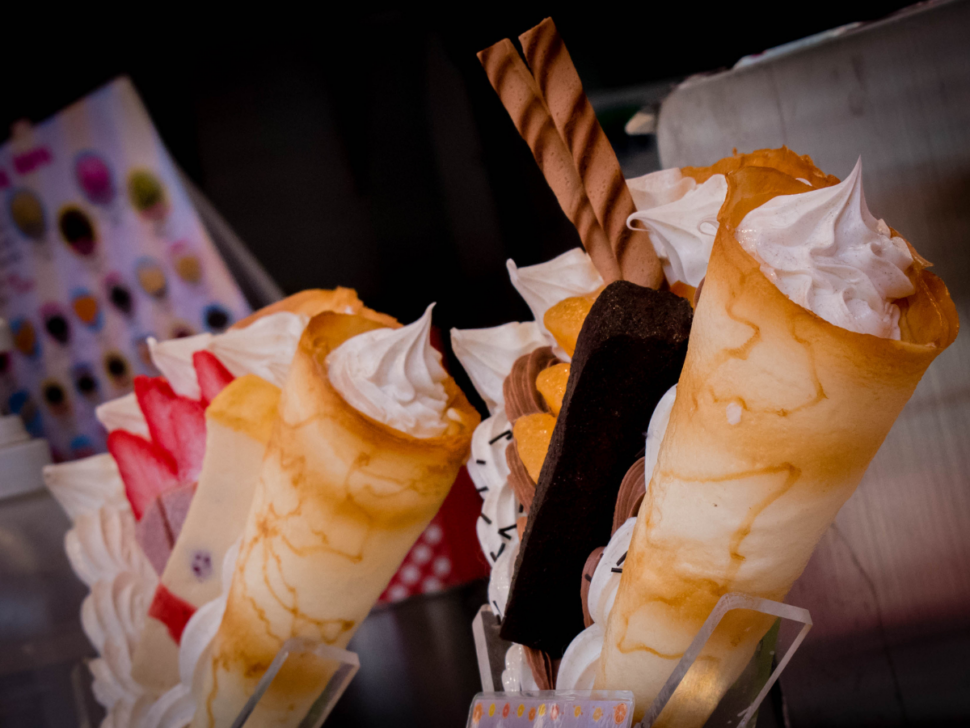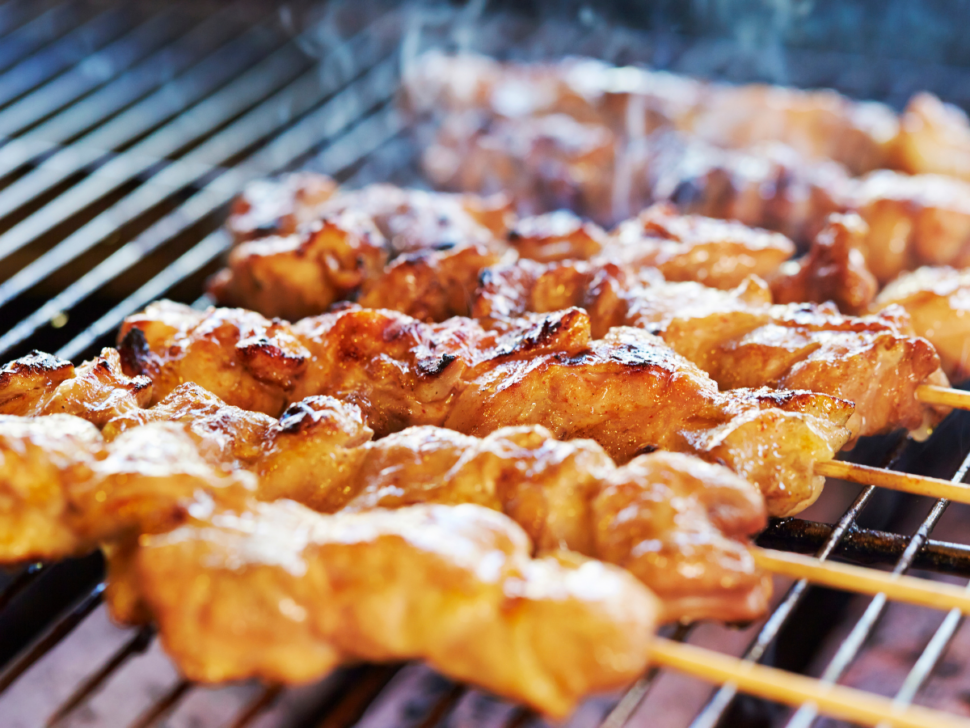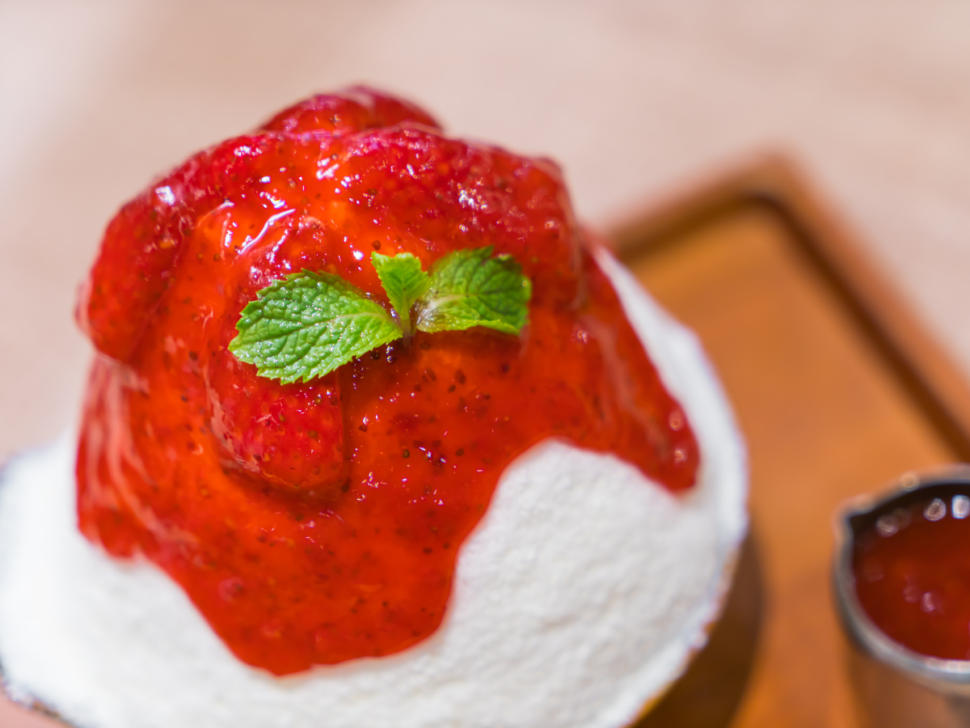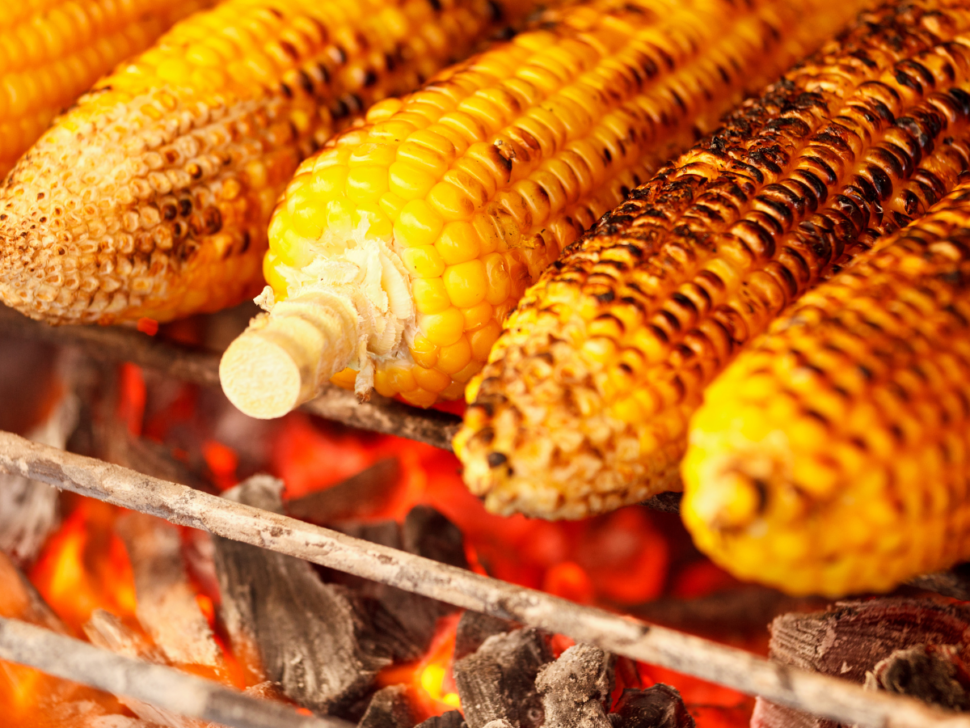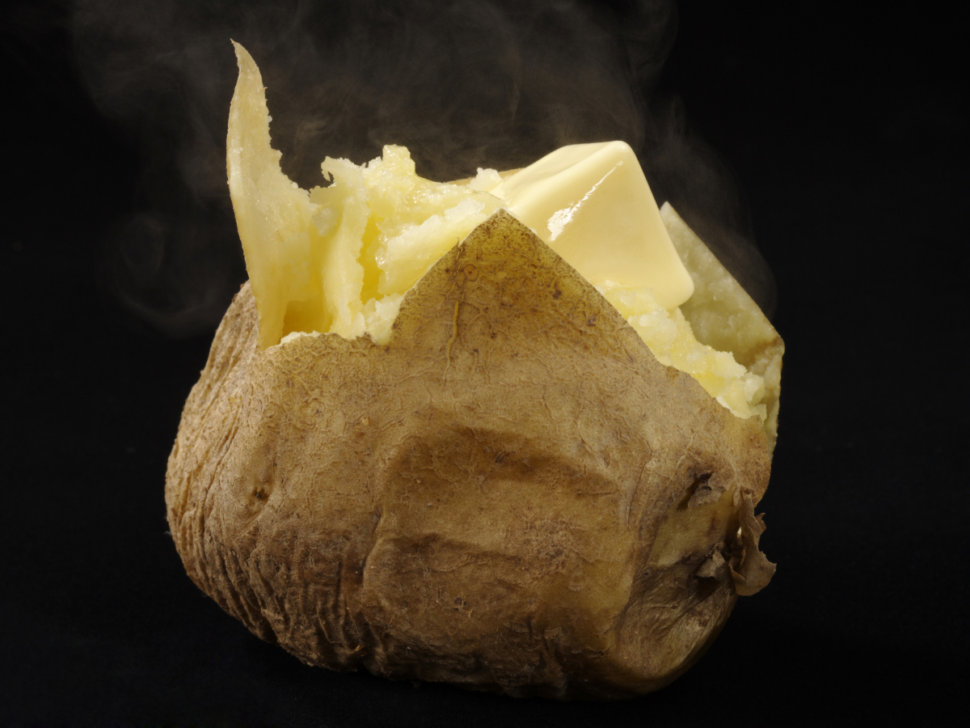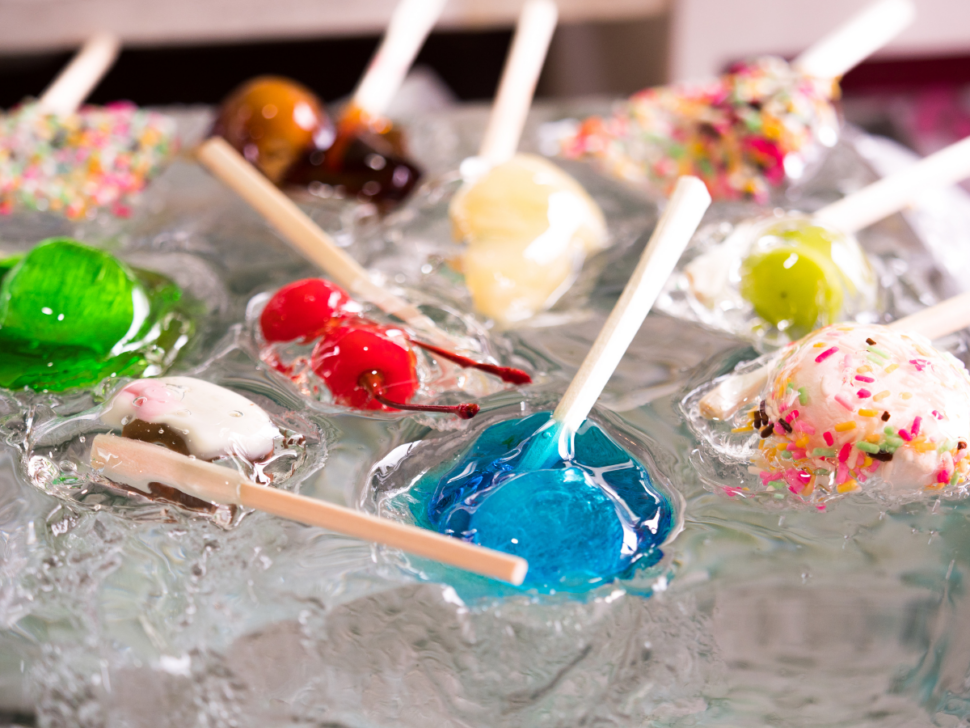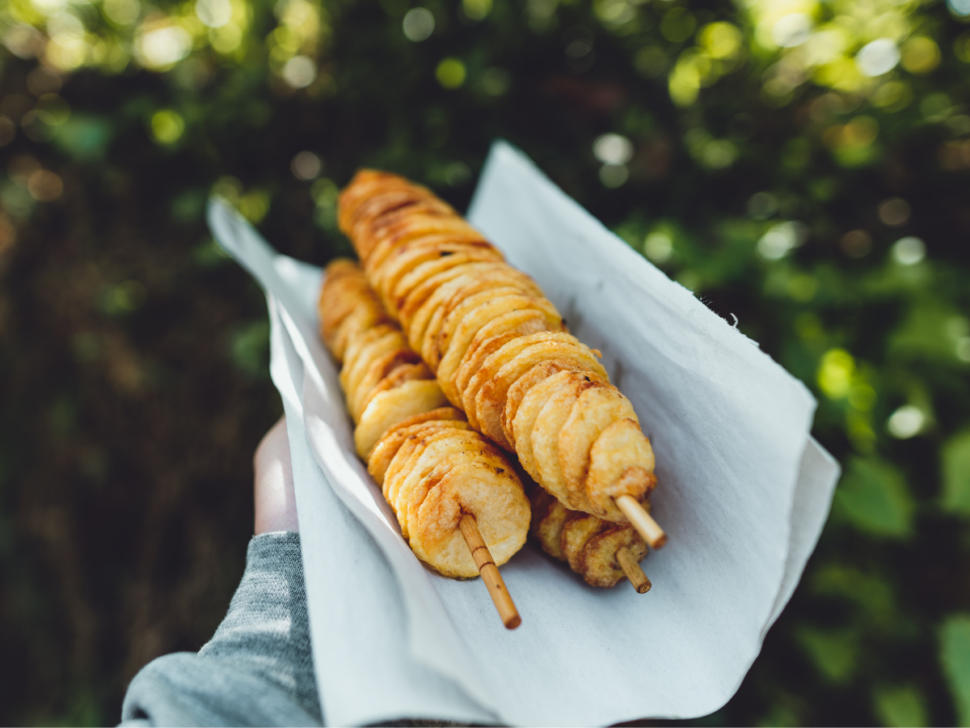20 Popular Matsuri Foods
Summer in Japan is known as matsuri season! Matsuri (まつり) are festivals that go on throughout Japan and celebrate a variety of things. While these festivals happen throughout the year, the majority of them occur during the summer months. These matsuri have dancing, games, and most importantly, food! Matsuri food is a beloved part of Japanese culture. Food is cooked and sold at matsuri from food stands known as yatai (屋台, やたい). The food available changes to fit the seasons, but here are some of Japan’s most famous matsuri treats!
Takoyaki (たこ焼き, たこやき)
Takoyaki is a staple of matsuri! Like many other festival foods, takoyaki originated in Osaka. It is created using a batter poured into a specially-made pan to help them get their iconic ball shape. Diced squid is added along with tempura crumbles, pickled ginger, and green onions. Once fried, they are drizzled with mayonnaise and takoyaki sauce, which is a mix of Worchester sauce and ketchup. They are then topped with dried seaweed known as aonori (青のり, あおのり) and dried bonito flakes known as katsuobushi (鰹節, かつおぶし). Takoyaki is usually served in a small tray and eaten with toothpicks or chopsticks.
Yakisoba (焼きそば, やきそば)
Yakisoba means “fried noodles” as 焼き means fried, and そば is a common buckwheat noodle. It is a stir-fried noodle dish with all ingredients cooked in the same pan. Classic yakisoba sauce is made with Worcestershire sauce, ketchup, oyster sauce, and soy sauce. Common mix-ins include pork, onions and cabbage with aonori, and bonito flakes on top.
Okonomiyaki (お好み焼き, おこのみやき)
Okonomiyaki is another common festival food with origins in Osaka. It is a savory pancake made from a wheat-based batter with plenty of toppings and mix-ins. In the batter, the most common ingredients to add are meat or seafood and cabbage. On top, the pancake is drizzled with mayonnaise and okonomiyaki sauce, which is a mixture of Worcestershire sauce and ketchup. Toppings include aonori, bonito flakes, and pickled ginger. Okonomiyaki are sometimes made into hashimaki (箸巻き, はしまき), which is an okonomiyaki wrapped around chopsticks. This version is most popular in the Kansai region. It makes eating okonomiyaki at a festival much easier!
Karaage (唐揚げ, かたあげ)
Karaage is Japanese fried chicken, which makes sense because 揚げ (あげ) means “deep fried.” The term karaage refers to any food that is coated and deep fried in oil, but it is most often assumed to mean chicken. The chicken is first marinated, usually in a mixture of soy sauce, sake, and ginger. It is then coated in potato starch or flour and deep fried. It is served in a cone or a cup with a toothpick for easy eating!
Dango (団子, だんご)
Dango is one of the most iconic Japanese treats! Dango are small Japanese dumplings that are made from rice flour which is rolled into balls, boiled, and placed on skewers. Some dango have a filling while others have toppings or sauces. The most common dango is the anko dango (あんこ団子, あんこだんご), which has a red bean paste filling. Another popular one is the mitarashi dango (みたらし団子, みたらしだんご), which consists of dango covered in a soy sauce glaze for a perfect balance of savory and sweet. One of the most iconic dango, however, is the hanami dango (花見だんご, はなみだんご), the green, white, and pink dango eaten during cherry blossom.
Choco Banana (チョコバナナ)
Choco Bananas are a simple but fun and delicious festival treat. They consist of a peeled banana skewered and covered in chocolate. These bananas can be simple or elaborate with toppings such as sprinkles and candies. Over the years, they have gotten more extravagant. It is now common to use white chocolate dyed in bright colors and decorate the bananas to look like little characters.
Crepes (クレープ)
While originally a French food, crepes have become hugely popular in Japan. Crepes are extremely thin pancakes that are filled with an array of ingredients. In Japan, the sweet crepes are by far the most popular. Festivals or food carts sell them in cones for easy handling. Ice cream, Nutella and custard are used as fillings. They often include fruit, particularly bananas, strawberries, or kiwis. They can then be topped with whipped cream, chocolate, candy such as pocky, and more fruit. The possibilities are endless!
Ikayaki (いか焼き, いかやき)
Ikayaki is a classic festival and street food. It consists of a squid grilled and covered in soy sauce or teriyaki sauce. Before grilling, the squid is marinated in a mixture of soy sauce, mirin, miso, ginger, and sake. Like many festival foods, it is served on a skewer for easy handling.
Yakitori (焼き鳥, やきとり)
Yakitori is another classic festival food! It is made by skewering chicken, grilling it then coating it with a sauce or flavoring. The skewers also sometimes include thick slices of scallions interspersed throughout the chicken. Yakitori traditionally comes in two flavors, salt or tare sauce. Tare sauce, also known as yakitori tare (焼き鳥のタレ, やきとりタレ), is a glaze made from soy sauce, mirin, sake, and sugar.
Taiyaki (鯛焼き, たいやき)
Taiyaki is made from a pancake or waffle batter poured into a special mold to get its classic fish shape. These fish-shaped cakes have a sweet filling usually made from red bean paste, but can include other fillings such as chocolate or custard. Taiyaki has also been modified to a cone shape, so they can work as a waffle cone and be filled with ice cream!
Kakigori (かき氷, かきごうり)
Kakigori is shaved ice flavored with syrup and condensed milk. This treat is served in a bowl and packed with a mound of towering shaved ice, which makes them an ideal treat during Japan’s hot and humid summers. The ice is similar to a snow cone, but with a fluffier, snow-like consistency. It is flavored with syrup, usually in a fruit flavor such as strawberry, melon, cherry, or even green tea. Condensed milk is poured on top to add extra sweetness. Sometimes toppings such as fruit or dango are then added on top.
Ramune (ラムネ)
Ramune is a classic sign of summer in Japan. It is a carbonated drink with a unique bottle neck that includes a glass marble. When the marble is pressed down on to open the bottle, it releases the pressure within the bottle and activates the carbonation. Ramune first came in a lemon-lime flavor and received its name from English word “lemonade.” Today, ramune comes in nearly 60 flavors!
Roasted Sweet Potato (焼き芋, やきいも)
Sweet potatoes are eaten as a common snack or street food in Japan. Sweet potatoes sold by street vendors or yatai are roasted and kept warm with hot stones. They are most commonly sold during the fall and winter festivals because they help keep you warm!
Yaki Tomorokoshi (焼きとうもろこし, やきともろこし)
Grilled corn is a summer classic around the world and Japan is no exception! Grilled corn is a common treat at summer festivals (夏祭り, なつまつり). Ears of sweet summer corn are shucked and grilled. They are then coated in a sauce made from soy sauce and/or miso.
Jagabata (じゃがバター)
じゃがバター comes from the fusion of じゃがいも (potato) and バター (butter). This self-explanatory name is used to refer to cooked potatoes with a helping of butter. It is a simple treat but is a comfort food to many. The plain potatoes are boiled or grilled, then split open and topped with a pad of butter. Some people choose to add toppings such as soy sauce or salt. These are especially popular during cherry blossom season.
Mizuame Candy and Fruit (水飴, みずあめ)
Mizuame translates to “water candy.” It is a syrup-like sweetener that is often used to coat fruit. Common fruits used are cherries, strawberries, and orange slices. The coated fruits are kept on ice to keep the mizuame from melting.
Carnival Classics
Classic treats we may see at a carnival are also available at matsuri! Cotton candy (わたあめ) is very popular at festivals, especially with kids. It can come in a bag or on a stick in multiple colors and fun shapes. Candy apples, known in Japan as りんご飴 (りんごあめ) are also very popular at festivals, especially in the summer.
Savory carnival-type foods are also available. This includes corn dogs (アメリカンドッグ –), which translates to “American dog.” Fries (フライドポテト) are also a classic! They come in a variety of styles, including tornado potatoes, which consist of a potato on a skewer cut to make a spiral shape.



